
Keywords: CRISPR-Cas9
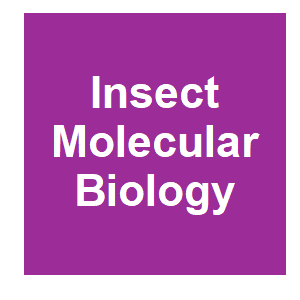
|
Alpha-mannosidase-2 modulates arbovirus infection in a pathogen- and Wolbachia-specific manner in Aedes aegypti mosquitoesNadya Urakova, Renuka E. Joseph, Allyn Huntsinger, Vanessa M. Macias, Matthew J. Jones, Leah T. Sigle, Ming Li, Omar S. Akbari, Zhiyong Xi, Konstantinos Lymperopoulos, Richard T. Sayre, Elizabeth A. McGraw, Jason L. Rasgon, Insect Molecular Biology, 2024.
Multiple Wolbachia strains can block pathogen infection, replication and/or transmission in Aedes aegypti mosquitoes under both laboratory and field conditions. Keywords: Anopheles, CRISPR-Cas9, Genetics &, transgenic |

|
Genome editing in pests: basic science to applicationsChen, X., Palli, S.R., Journal of Pest Science, 2024.
Recent developments in sequencing technologies produced enormous data on gene sequences and the identity of genes in many pest insects and disease vectors. However, the function of many of these genes is unknown. Functional genomics studies to uncover gene function in pest ... Keywords: Anopheles, CRISPR-Cas9, Genetics &, transgenic |

|
A multiplexed, confinable CRISPR/Cas9 gene drive can propagate in caged Aedes aegypti populationsAnderson, M.A.E., Gonzalez, E., Edgington, M.P. et al., Nature Communications, 15. 2024.
Aedes aegypti is the main vector of several major pathogens including dengue, Zika and chikungunya viruses. Classical mosquito control strategies utilizing insecticides are threatened by rising resistance. This has stimulated interest in new genetic systems such as gene ... Keywords: Anopheles, CRISPR-Cas9, Genetics &, transgenic |

|
Engineered Antiviral Sensor Targets Infected MosquitoesElena Dalla Benetta, Adam J. López-Denman, Hsing-Han Li, Reem A. Masri, Daniel J. Brogan, Michelle Bui, Ting Yang, Ming Li, Michael Dunn, Melissa J. Klein, Sarah Jackson, Kyle Catalan, Kim R. Blasdell, Priscilla Tng, Igor Antoshechkin, Luke S. Alphey, Pra, The CRISPR Journal, 6:543-556. 2024.
Escalating vector disease burdens pose significant global health risks, as such innovative tools for targeting mosquitoes are critical. CRISPR-Cas technologies have played a crucial role in developing powerful tools for genome manipulation in various eukaryotic organisms. ... Keywords: Anopheles, CRISPR-Cas9, Genetics &, transgenic |

|
Gene drives, mosquitoes, and ecosystems: An interdisciplinary approach to emerging ethical concernsRicardo D. Moreno, Luca Valera, Cristián Borgoño, Juan Carlos Castilla, José Luis Riveros, Frontiers in Environmental Science, 11. 2023.
Gene drives are genetic elements that in sexually reproducing organisms spread faster than those transmitted through a Mendelian fashion. Since gene drives can be engineered to modify different aspects of physiology and reproduction, they have been proposed as a new and ... Keywords: Anopheles, CRISPR-Cas9, Genetics &, transgenic |

|
Advancements in Gene Editing: Using CRISPR-Cas9 and Gene Drive Technology to Neutralize VirusesAnonymous, News Directory 3, 2023.
Researchers from the US Fred Hutchinson Cancer Research Center recently published research results in the international academic journal “Nature” demonstrating that herpes virus type 1 (HSV-1) was neutralized using “Gene Drive” technology . Gene drive refers to a ... Keywords: Anopheles, CRISPR-Cas9, Genetics &, transgenic |

|
CRISPR/Cas9: a cutting-edge solution for combatting the fall armyworm, Spodoptera frugiperdaGouda, M.N.R., Jeevan, H., Shashank, H.G., Molecular Biology Reports, 51. 2023.
The utilization of CRISPR/Cas9 in Spodoptera frugiperda, commonly known as fall armyworm, presents a groundbreaking avenue for pest management. With its ability to precisely modify the insect’s genome, CRISPR/Cas9 offers innovative strategies to combat this destructive pest. ... Keywords: Anopheles, CRISPR-Cas9, Genetics &, transgenic |

|
Upper Bound on the Mutational Burden Imposed by a CRISPR-Cas9 Gene-Drive ElementMichael S. Overton, Sean E. Guy, Xingsen Chen, Alena Martsul, Krypton Carolino, Omar S. Akbari, Justin R. Meyer, Sergey Kryazhimskiy, bioRxiv, 2023.
CRISPR-Cas9 gene drives (CCGDs) are powerful tools for genetic control of wild populations, useful for eradication of disease vectors, conservation of endangered species and other applications. However, Cas9 alone and in a complex with gRNA can cause double-stranded DNA breaks at ... Keywords: Anopheles, CRISPR-Cas9, Genetics &, transgenic |

|
Transformative Approaches for Sustainable Weed Management: The Power of Gene Drive and CRISPR-Cas9Kumam, Y.; Trick, H.N.; Vara Prasad, P.V.; Jugulam, M., Genes, 14. 2023.
Weeds can negatively impact crop yields and the ecosystem’s health. While many weed management strategies have been developed and deployed, there is a greater need for the development of sustainable methods for employing integrated weed management. Gene drive systems can be ... Keywords: Anopheles, CRISPR-Cas9, Genetics &, transgenic |

|
A population modification gene drive targeting both Saglin and Lipophorin impairs Plasmodium transmission in Anopheles mosquitoesEmily I Green, Etienne Jaouen, Dennis Klug, Roenick Proveti Olmo, Amandine Gautier, Stéphanie Blandin, Eric Marois, eLife, 12. 2023.
Lipophorin is an essential, highly expressed lipid transport protein that is secreted and circulates in insect hemolymph. We hijacked the Anopheles coluzzii Lipophorin gene to make it co-express a single-chain version of antibody 2A10, which binds sporozoites of the malaria ... Keywords: Anopheles, CRISPR-Cas9, Genetics &, transgenic |

|
Gene Drive Mosquitoes from Islamic Perspective: A Preliminary DiscussionN. M. Isa, Global Journal Al-Thaqafah, 13. 2023.
Gene drive mosquitoes could spread desired trait, such as female infertility within a wild population at a rate higher than the normal inheritance rate and could eventually wipe out the population. Consequently, this makes gene drive mosquitoes one of the promising approaches in ... Keywords: Anopheles, CRISPR-Cas9, Genetics &, transgenic |

|
Synthetic gene drives as an anthropogenic evolutionary forceA. D. Cutter, Trends in Genetics, 2023.
Genetic drive represents a fundamental evolutionary force that can exact profound change to the genetic composition of populations by biasing allele transmission. Herein I propose that the use of synthetic homing gene drives, the human-mediated analog of endogenous genetic ... Keywords: Anopheles, CRISPR-Cas9, Genetics &, transgenic |

|
Identification and functional analysis of Cochliomyia hominivorax U6 gene promotersR. Novas, T. Basika, M. E. Williamson, P. Fresia, A. Menchaca and M. J. Scott, Insect Molecular Biology, 2023.
The New World screwworm, Cochliomyia hominivorax, is an obligate parasite, which is a major pest of livestock. While the sterile insect technique was used very successfully to eradicate C. hominivorax from North and Central America, more cost-effective genetic methods will likely ... Keywords: Anopheles, CRISPR-Cas9, Genetics &, transgenic |
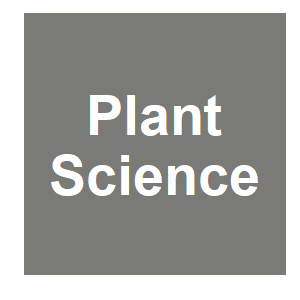
|
A detailed landscape of CRISPR-Cas-mediated plant disease and pest managementS. Karmakar, P. Das, D. Panda, K. Xie, M. J. Baig and K. A. Molla, Plant Science, 323:111376. 2022.
Genome editing technology has rapidly evolved to knock-out genes, create targeted genetic variation, install precise insertion/deletion and single nucleotide changes, and perform large-scale alteration. The flexible and multipurpose editing technologies have started playing a ... Keywords: Anopheles, CRISPR-Cas9, Genetics &, transgenic |
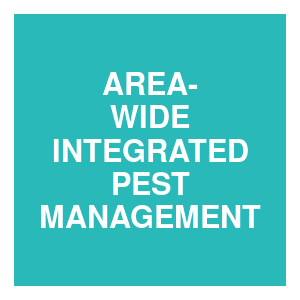
|
Genome editing and its applications for insect pest control: Curse or blessing?Hacker, I. , and Schetelig, M. F, AREA-WIDE INTEGRATED PEST MANAGEMENT: Development and Field Application, 2021.
Gene and genome editing are described as cutting-edge research tools with the potential to tackle urgent global challenges in the management of agricultural pests and human disease vectors such as mosquitoes. The field is defined by the chances and challenges to interlink the ... Keywords: Anopheles, CRISPR-Cas9, Genetics &, transgenic |

|
Gene drive: a faster route to plant improvementH. A. Siddiqui, T. Harvey-Samuel and S. Mansoor, Trends in Plant Science, 2021.
Gene drives for control of vector-borne diseases have been demonstrated in insects but remain challenging in plants. Theoretically, they could be transformative in speeding breeding programs and contributing to food security through providing novel weed control methods. Zhang et ... Keywords: Anopheles, CRISPR-Cas9, Genetics &, transgenic |

|
CRISPR/Cas9-based functional characterization of the pigmentation gene ebony in Plutella xylostellaX. Xu, T. Harvey-Samuel, J. Yang, M. You and L. Alphey, Insect Molecular Biology, 2021.
Abstract Body pigmentation is an important character of insects in adapting to biotic and abiotic environmental challenges. Additionally, based on the relative ease of screening, several genes involved in insect melanisation have been used in classic genetic studies or as visual ... Keywords: Anopheles, CRISPR-Cas9, Genetics &, transgenic |
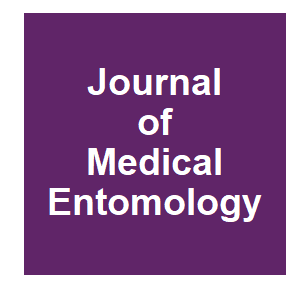
|
ReMOT Control Delivery of CRISPR-Cas9 Ribonucleoprotein Complex to Induce Germline Mutagenesis in the Disease Vector Mosquitoes Culex pipiens pallens (Diptera: Culicidae)X. X. Li, Y. Xu, H. B. Zhang, H. T. Yin, D. Zhou, Y. Sun, L. Ma, B. Shen and C. L. Zhu, Journal of Medical Entomology, 58:1202-1209. 2021.
The wide distribution of Culex (Cx.) pipiens complex mosquitoes makes it difficult to prevent the transmission of mosquito-borne diseases in humans. Gene editing using CRISPR/Cas9 is an effective technique with the potential to solve the growing problem of mosquito-borne ... Keywords: Anopheles, CRISPR-Cas9, Genetics &, transgenic |

|
Converting endogenous genes of the malaria mosquito into simple non-autonomous gene drives for population replacementA. Hoermann, S. Tapanelli, P. Capriotti, G. Del Corsano, E. K. G. Masters, T. Habtewold, G. K. Christophides and N. Windbichler, eLife, 10. 2021.
Gene drives for mosquito population replacement are promising tools for malaria control. However, there is currently no clear pathway for safely testing such tools in endemic countries. The lack of well-characterized promoters for infection-relevant tissues and regulatory hurdles ... Keywords: Anopheles, CRISPR-Cas9, Genetics &, transgenic |

|
ReMOT Control Delivery of CRISPR-Cas9 Ribonucleoprotein Complex to Induce Germline Mutagenesis in the Disease Vector Mosquitoes Culex pipiens pallens (Diptera: Culicidae)X. X. Li, Y. Xu, H. B. Zhang, H. T. Yin, D. Zhou, Y. Sun, L. Ma, B. Shen and C. L. Zhu, Journal of Medical Entomology, 58. 2021.
The wide distribution of Culex (Cx.) pipiens complex mosquitoes makes it difficult to prevent the transmission of mosquito-borne diseases in humans. Gene editing using CRISPR/Cas9 is an effective technique with the potential to solve the growing problem of mosquito-borne ... Keywords: Anopheles, CRISPR-Cas9, Genetics &, transgenic |
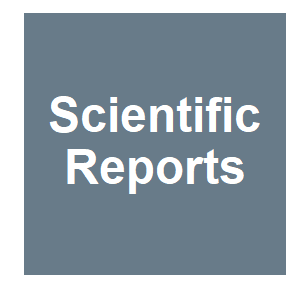
|
Split drive killer-rescue provides a novel threshold-dependent gene driveM. P. Edgington, T. Harvey-Samuel and L. Alphey, Scientific Reports, 10:13. 2020.
We show that although end-joining repair mechanisms may cause the system to break down, under certain conditions, it should persist over time scales relevant for genetic control programs. The potential of such a system to provide localised population suppression via sex ratio ... Keywords: Anopheles, CRISPR-Cas9, Genetics &, transgenic |

|
Resistance to natural and synthetic gene drive systemsT. A. R. Price, N. Windbichler, R. L. Unckless, A. Sutter, J.-N. Runge, P. A. Ross, A. Pomiankowski, N. L. Nuckolls, C. Montchamp-Moreau, N. Mideo, O. Y. Martin, A. Manser, M. Legros, A. M. Larracuente, L. Holman, J. Godwin, N. Gemmell, C. Courret, A. Buc, Journal of Evolutionary Biology, 2020.
This review summarizes our current knowledge of drive resistance in both natural and synthetic gene drives. We explore how insights from naturally occurring and synthetic drive systems can be integrated to improve the design of gene drives, better predict the outcome of releases ... Keywords: Anopheles, CRISPR-Cas9, Genetics &, transgenic |

|
CRISPR/Cas9 gene drive technology to control transmission of vector-borne parasitic infectionsM. Nateghi Rostami, Parasite Immunology, preprint:e12762. 2020.
Gene drive is the process of copying of an endonuclease-containing cassette that leads to increased frequency of inheritance of the desired traits in a targeted population. CRISPR/Cas9 technology is advancing genetic manipulation of insects in the field of gene drive ... Keywords: Anopheles, CRISPR-Cas9, Genetics &, transgenic |

|
Can CRISPR gene drive work in pest and beneficial haplodiploid species?J. Li, O. Aidlin Harari, A.-L. Doss, L. L. Walling, P. W. Atkinson, S. Morin and B. E. Tabashnik, Evolutionary Applications, 2020.
Gene drives based on CRISPR/Cas9 have the potential to reduce the enormous harm inflicted by crop pests and insect vectors of human disease, as well as to bolster valued species. In contrast with extensive empirical and theoretical studies in diploid organisms, little is known ... Keywords: Anopheles, CRISPR-Cas9, Genetics &, transgenic |

|
Development of genetic control strategies for insect pests using CRISPR/Cas9 Développement de méthodes de lutte génétique contre de l’insecte nuisible basé sur le system CRISPR/Cas9E. Green, Université de Strasbourg, 2019.
nsect pest control remains an important economic, environmental, and public health challenge. CRISPR/Cas9 gene drive (GD) is a novel genetic control strategy. GDs are genetic systems that can rapidly invade a population. This manuscript presents my efforts to develop gene drives ... Keywords: Anopheles, CRISPR-Cas9, Genetics &, transgenic |
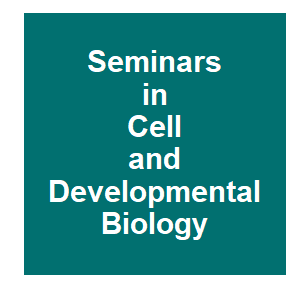
|
Improving plant-resistance to insect-pests and pathogens: The new opportunities through targeted genome editingD. S. Bisht, V. Bhatia and R. Bhattacharya, Seminars in Cell & Developmental Biology, 96:65-76. 2019.
The advantages of high input agriculture are fading away due to degenerating soil health and adverse effects of climate change. Safeguarding crop yields in the changing environment and dynamics of pest and pathogens, has posed new challenges to global agriculture. Thus, ... Keywords: Anopheles, CRISPR-Cas9, Genetics &, transgenic |
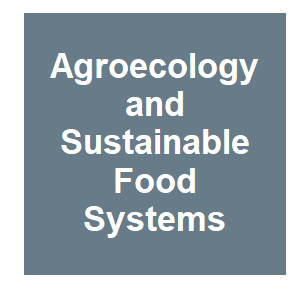
|
Gene driving the farm: who decides, who owns, and who benefits?Montenegro de Wit, M, Agroecology and Sustainable Food Systems, 43:1054-1074. 2019.
This commentary essay explores the social and ecological implications of gene-driving agriculture. Keywords: Anopheles, CRISPR-Cas9, Genetics &, transgenic |
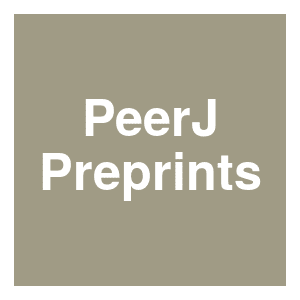
|
A sustainable synthetic biology approach for the control of the invasive golden mussel (Limnoperna fortunei)M. F. Rebelo, L. F. Afonso, J. A. Americo, L. da Silva, J. L. B. Neto, F. Dondero and Q. Zhang, PeerJ Preprints, 6:e27164v3. 2018.
The recent development of the CRISPR-Cas9-based gene drive has created the conditions to seriously consider this technology to solve one of the major environmental challenges in biodiversity conservation i.e. the control of invasive species. There is no efficient control method ... Keywords: Anopheles, CRISPR-Cas9, Genetics &, transgenic |
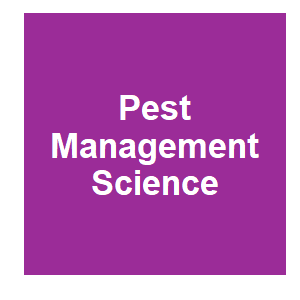
|
Gene drive systems: Do they have a place in agricultural weed management?Neve, P, Pest Management Science, 74:2672-2679. 2018.
There is a pressing need for novel control techniques in agricultural weed management. Direct genetic control of agricultural pests encompasses a range of techniques to introduce and spread novel, fitness-reducing genetic modifications through pest populations. Recently, the ... Keywords: Anopheles, CRISPR-Cas9, Genetics &, transgenic |
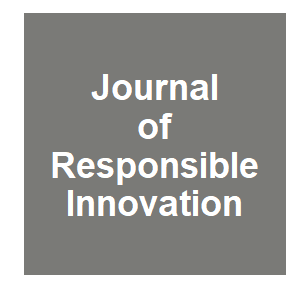
|
Identifying and detecting potentially adverse ecological outcomes associated with the release of gene-drive modified organismsHayes, KRH, G. R.; Dana, G. V.; Foster, S. D.; Ford, J. H.; Thresher, R.; Ickowicz, A.; Peel, D.; Tizard, M.; De Barro, P.; Strive, T.; Dambacher, J. M., Journal of Responsible Innovation, 5:S139-S158. 2018.
Synthetic gene drives could provide new solutions to a range of old problems such as controlling vector-borne diseases, agricultural pests and invasive species. In this paper, we outline methods to identify hazards and detect potentially adverse ecological outcomes at the ... Keywords: Anopheles, CRISPR-Cas9, Genetics &, transgenic |

|
Economic issues to consider for gene drivesMitchell, PDB, Z.; McRoberts, N., Journal of Responsible Innovation, 5:S180-S202. 2018.
We examine four economic issues regarding gene drive applications made possible by gene editing technologies. First, whether gene drives are self-sustaining or self-limiting will largely determine which types of organizations have incentives to develop and deploy gene drives and ... Keywords: Anopheles, CRISPR-Cas9, Genetics &, transgenic |
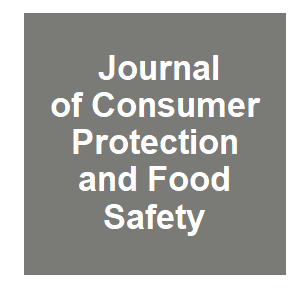
|
Gene drives do not always increase in frequency: from genetic models to risk assessmentde Jong, TJ, Journal Fur Verbraucherschutz Und Lebensmittelsicherheit-Journal of Consumer Protection and Food Safety, 12:299-307. 2017.
Homing genes encode endonucleases that make a double stranded break in the DNA, destroying a target site on the homologous chromosome. When the cell repairs the break the homing allele is copied, converting a heterozygote into a homozygote. This results in gene drive (GD), an ... Keywords: Anopheles, CRISPR-Cas9, Genetics &, transgenic |

Contact
David O’Brochta
Foundation for the
National Institutes of Health
geneconvenevi@fnih.org
RSS

